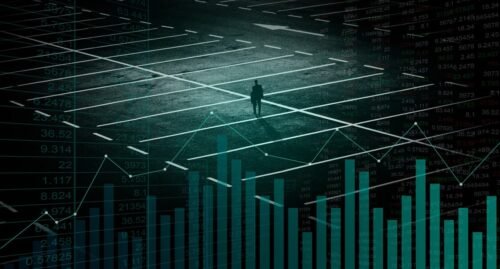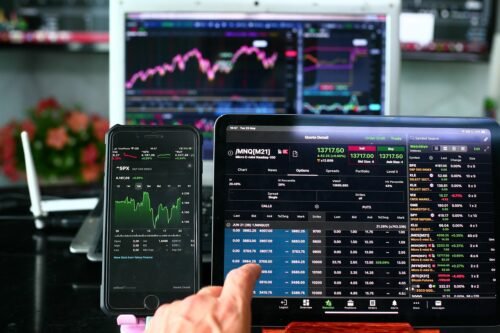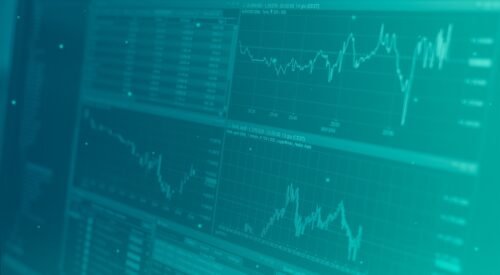In the realm of financial analysis, balance sheet forecasting serves as a crucial tool to assess the future health and stability of an organization. By projecting future financial statements based on historical data and carefully analyzing market trends, businesses can gain valuable insights into their financial position and make informed strategic decisions. This article explores the intricacies of balance sheet forecasting, its importance in financial planning, and the methodologies utilized to accurately predict an organization’s financial standing.

I. Definition of Balance Sheet Forecasting
A. Explanation of balance sheet
A balance sheet is a financial statement that provides a snapshot of a company’s financial position at a specific point in time. It presents a summary of a company’s assets, liabilities, and equity, showing what it owns, what it owes, and the investments made by its shareholders. The balance sheet provides valuable information for assessing the financial health and stability of a company.
B. Definition of forecasting
Forecasting is the process of estimating or predicting future financial outcomes based on historical data and relevant variables. It involves analyzing past trends, identifying patterns, and making assumptions about the future to project the financial position of a company. Forecasting is an essential tool for financial planning, decision-making, and risk assessment.
C. Introduction to balance sheet forecasting
Balance sheet forecasting combines the concepts of a balance sheet and forecasting to predict the future financial state of a company. It involves projecting the values of assets, liabilities, and equity based on expected revenues, expenses, investments, and borrowing activities. By anticipating the future financial position of a company, balance sheet forecasting helps in making informed decisions, developing budgets, and evaluating potential risks.
II. Importance of Balance Sheet Forecasting
A. Decision-making tool
Balance sheet forecasting provides valuable insights into the financial health and performance of a company, enabling informed decision-making. By projecting future balances of assets, liabilities, and equity, companies can evaluate the impact of various decisions on their financial position. For example, forecasting can help determine the feasibility of acquiring new assets, expanding operations, or undertaking significant investments.
B. Budgeting and financial planning
Balance sheet forecasting is crucial for budgeting and financial planning. It allows companies to estimate their future cash flows, identify potential funding gaps, and allocate resources effectively. By projecting future assets, liabilities, and equity, companies can develop comprehensive budgets that align with their strategic objectives and financial constraints.
C. Potential for risk assessment
Balance sheet forecasting plays a vital role in assessing and managing financial risks. By projecting the future financial position of a company, it helps identify potential liquidity issues, solvency risks, and debt obligations. Companies can proactively address these risks by adjusting their financing strategies, optimizing their working capital, or undertaking risk mitigation measures.
III. Components of a Balance Sheet
A. Assets
Assets represent what a company owns. They can be categorized into current assets and non-current assets.
1. Current assets
Current assets are assets that can be easily converted into cash within a year or the operating cycle of a business. They include:
a. Cash and cash equivalents
Cash and cash equivalents include currency, checking accounts, savings accounts, and highly liquid investments with maturities of three months or less. These assets provide immediate access to funds for meeting short-term obligations.
b. Accounts receivable
Accounts receivable refer to the amounts owed to a company by its customers for the sale of goods or services on credit. They represent the outstanding payments that the company expects to receive in the near future.
c. Inventory
Inventory consists of goods held by a company for sale or for use in the production of goods or services. It includes raw materials, work-in-progress, and finished goods. Inventory must be valued accurately to reflect its current worth.
2. Non-current assets
Non-current assets are assets that are expected to provide future economic benefits for a period longer than one year. They include:
a. Property, plant, and equipment
Property, plant, and equipment (PP&E) refers to tangible assets used in the production or operation of a company. It includes land, buildings, machinery, vehicles, and other physical assets. PP&E is typically recorded at cost less accumulated depreciation.
b. Intangible assets
Intangible assets are non-physical assets that lack a physical form but have value to a company. They include patents, trademarks, copyrights, goodwill, and intellectual property. Intangible assets are amortized over their useful lives.
B. Liabilities
Liabilities represent what a company owes to its creditors and stakeholders. They can be classified into current liabilities and non-current liabilities.
1. Current liabilities
Current liabilities are obligations that are expected to be settled within one year or the normal operating cycle. They include:
a. Accounts payable
Accounts payable represent amounts owed by a company to its suppliers for the purchase of goods or services on credit. They form part of the company’s working capital and need to be managed effectively to maintain good supplier relationships.
b. Short-term debt
Short-term debt refers to borrowings that need to be repaid within one year. It includes bank loans, lines of credit, and short-term notes payable. Managing short-term debt is crucial for maintaining liquidity and financial stability.
2. Non-current liabilities
Non-current liabilities are long-term obligations that are not expected to be settled within one year. They include:
a. Long-term debt
Long-term debt comprises borrowings with a maturity of more than one year. It includes bonds, mortgages, and long-term loans. Managing long-term debt is important for maintaining a healthy debt-to-equity ratio and ensuring sustainable financing.
b. Deferred tax liabilities
Deferred tax liabilities represent future tax obligations arising from temporary differences between book and tax accounting. These liabilities arise when taxable income is expected to be higher in the future, leading to higher tax payable.
C. Equity
Equity represents the ownership interest of shareholders in a company. It is the residual interest in the assets of a company after deducting liabilities. Equity consists of the following components:
1. Share capital
Share capital represents the amount of money invested by shareholders in exchange for ownership shares or stocks. It represents the initial capital contributed by shareholders when the company is formed or when additional shares are issued.
2. Retained earnings
Retained earnings are the accumulated profits and losses of a company that are reinvested rather than distributed to shareholders as dividends. They represent the portion of earnings that has been retained for future growth or to meet financial obligations.
3. Reserves
Reserves are profits that have been set aside by a company for specific purposes, such as future investments, capital projects, or contingencies. They provide a financial cushion for unexpected expenses or opportunities for growth.
IV. Methods and Techniques for Balance Sheet Forecasting
A. Historical data analysis
Historical data analysis involves analyzing past financial performance to identify trends, patterns, and relationships. By examining historical balance sheet data, companies can gain insights into their financial position and use this information as a basis for forecasting future balances.
B. Trend analysis
Trend analysis involves identifying and extrapolating historical patterns or trends to estimate future outcomes. It helps companies understand how their balance sheet items have been changing over time and enables them to project those changes into the future.
C. Regression analysis
Regression analysis is a statistical technique that helps identify the relationship between variables. By analyzing historical data and identifying key drivers of change in balance sheet items, regression analysis can be used to estimate future values based on the relationships observed.
D. Ratio analysis
Ratio analysis involves calculating and analyzing key financial ratios derived from balance sheet data. Ratios such as liquidity ratios, solvency ratios, and profitability ratios provide valuable insights into a company’s financial health and can be used to project future balance sheet positions.
E. Working capital estimation
Working capital estimation involves forecasting the short-term financial needs of a company by considering the net change in current assets and current liabilities. This method focuses on maintaining an optimal level of working capital to ensure liquidity and operational efficiency.
F. Scenario analysis
Scenario analysis involves developing multiple scenarios based on different assumptions and assessing their impact on the balance sheet. By considering various scenarios, companies can prepare for different potential outcomes and make informed decisions.

V. Steps in Balance Sheet Forecasting
A. Gather relevant financial information
To begin the balance sheet forecasting process, it is essential to gather and organize all relevant financial information. This includes historical balance sheets, income statements, cash flow statements, and any other financial data that may be necessary for the forecasting process.
B. Analyze historical data
Analyzing historical data is a crucial step in balance sheet forecasting. By examining past trends and patterns, companies can identify any significant changes or relationships that may impact future balance sheet positions.
C. Identify trends
After analyzing historical data, companies must identify and understand the trends that have emerged. This involves identifying key drivers or factors that have influenced the changes in the balance sheet items over time.
D. Make assumptions
Forecasting requires making assumptions about future events and circumstances that may impact the balance sheet. These assumptions should be based on a thorough analysis of internal and external factors, industry trends, and the company’s strategic direction.
E. Use forecasting techniques
Once assumptions are in place, various forecasting techniques can be used to project future balance sheet positions. These techniques may include trend analysis, regression analysis, ratio analysis, working capital estimation, and scenario analysis.
F. Validate and adjust the forecast
After developing the initial forecast, it is essential to validate its accuracy and adjust it as needed. This can be done by comparing the forecasted values to actual data from past periods and making adjustments based on any discrepancies found.
G. Communicate and monitor the forecast
Once the forecast is finalized, it should be communicated to relevant stakeholders, such as executives, management, and investors. Regular monitoring of the forecast is necessary to ensure that any changes or developments are captured, and adjustments are made promptly.
VI. Challenges and Limitations of Balance Sheet Forecasting
A. Uncertainty and volatility
Balance sheet forecasting is subject to uncertainties and volatility in the business environment. External factors, such as changes in the economy, market conditions, or regulatory requirements, can significantly impact the accuracy of the forecast.
B. Accuracy and reliability
Forecasting the balance sheet involves making assumptions and estimations based on historical data and various techniques. The accuracy and reliability of the forecast depend on the quality of the data, the validity of assumptions, and the appropriateness of the chosen forecasting methods.
C. External factors
Balance sheet forecasting may be influenced by external factors beyond the control of the company, such as political events, natural disasters, or changes in consumer behavior. These external factors can disrupt the projected financial position and require adjustments to the forecast.
D. Assumptions and biases
Forecasting involves making assumptions about future events and circumstances. These assumptions are based on the available information at the time and may be influenced by biases or subjective judgments. It is important to recognize and mitigate potential biases to ensure a more accurate forecast.

VII. Best Practices for Balance Sheet Forecasting
A. Use multiple forecasting methods
To improve accuracy and reliability, it is recommended to use multiple forecasting methods and compare their results. This helps identify any inconsistencies or discrepancies and provides a more comprehensive view of the forecasted balance sheet.
B. Regularly review and update the forecast
Balance sheet forecasting is an ongoing process that requires regular review and updates. As new information becomes available and circumstances change, it is important to reassess the forecast and make necessary adjustments to ensure its relevance and accuracy.
C. Consider different scenarios
In addition to a base forecast, it is beneficial to consider different scenarios to assess the potential impact of various outcomes on the balance sheet. This helps companies prepare for different possibilities and develop contingency plans accordingly.
D. Seek expert advice
In complex or uncertain situations, it may be helpful to seek expert advice from financial professionals, analysts, or consultants. Their expertise and experience can provide valuable insights and guidance in developing a more accurate balance sheet forecast.
E. Monitor actual performance
To evaluate the accuracy of the forecast and identify any gaps or discrepancies, it is essential to continuously monitor the actual performance against the forecasted balance sheet. Regular monitoring allows for timely adjustments and improvements in the forecasting process.
VIII. Software and Tools for Balance Sheet Forecasting
A. Spreadsheets
Spreadsheets, such as Microsoft Excel or Google Sheets, are commonly used tools for balance sheet forecasting. They allow for easy manipulation of data, calculations, and visualization of the forecasted balance sheet.
B. Financial planning software
Financial planning software provides advanced features and functionalities for balance sheet forecasting. These tools often integrate with other financial systems, such as accounting software, and offer comprehensive forecasting capabilities.
C. Business intelligence tools
Business intelligence tools, such as Tableau or Power BI, can be used for balance sheet forecasting by analyzing large volumes of data and generating visualizations and reports. These tools provide advanced analytics and data visualization capabilities, enabling more effective forecasting and decision-making processes.
IX. Case Studies on Balance Sheet Forecasting
A. Company X: Successful balance sheet forecasting
Company X, a manufacturing company, implemented balance sheet forecasting to improve its financial planning and decision-making processes. By using historical data analysis, trend analysis, and working capital estimation, the company accurately projected its future asset and liability positions.
The forecast enabled Company X to identify potential funding gaps and adjust its financing strategies accordingly. With a more accurate and comprehensive understanding of its financial position, the company successfully managed its working capital, optimized its debt structure, and made informed investment decisions.
B. Company Y: Challenges encountered
Company Y, a retail company, faced challenges in accurately forecasting its balance sheet due to external factors and uncertainties in the market. Despite using forecasting techniques such as regression analysis and scenario analysis, the company struggled to predict changes in consumer behavior and market trends.
To address these challenges, Company Y sought expert advice and implemented a more robust monitoring and adjustment process. By regularly reviewing and updating its forecast and incorporating industry-specific knowledge, the company was able to mitigate risks, improve accuracy, and make more informed strategic decisions.
In conclusion, balance sheet forecasting is a vital tool for financial planning, decision-making, and risk assessment. By analyzing historical data, using forecasting techniques, and considering various scenarios, companies can project their future financial position and make informed strategic choices. While balance sheet forecasting comes with challenges and limitations, employing best practices and utilizing appropriate software and tools can help companies overcome these difficulties and achieve more accurate and reliable forecasts.
